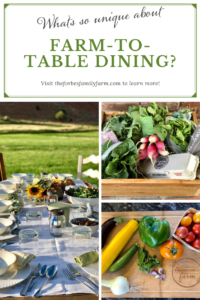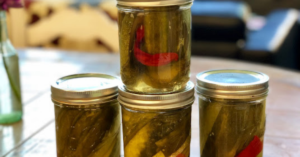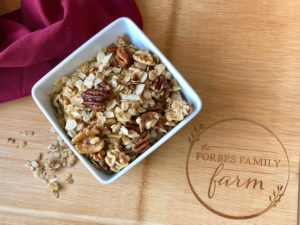What exactly does "farm-to-table" mean?
Eating farm to table was one of the ideas to lead us down this path of becoming farmers. But, thanks in part to marketing efforts in the food service industry, the phrase “farm-to-table” has taken on many meanings. We believe farm-to-table is best defined as “food coming directly from a farm to your table with as few steps as possible in between.” This definition boils down to three simple principles.
Know where your food comes from
First, farm-to-table food is direct sourced, meaning you know exactly which farm the food came from. The most direct sourcing is when you pick up food directly from a farm. But thankfully many farms have other distribution options like farmer’s markets, Community Supported Agriculture (CSA) memberships, and local co-ops. The key point is that food comes from a specific farm, so we generally do not consider produce at a grocery store consolidated from numerous farms to be farm-to-table.
While the idea originates from buying fresh, local produce, the concept can be applied to any of your food sources. So it can also encompass local ranchers, fishers, wineries, breweries or other local food producers. The key point is purchasing your food directly from a producer in your area. While this ensures you get the freshest product, you are also helping support the local economy and the small producers in your area. Many small farms and ranches are dependent on selling directly to consumers for their livelihood, so you are also supporting your community.
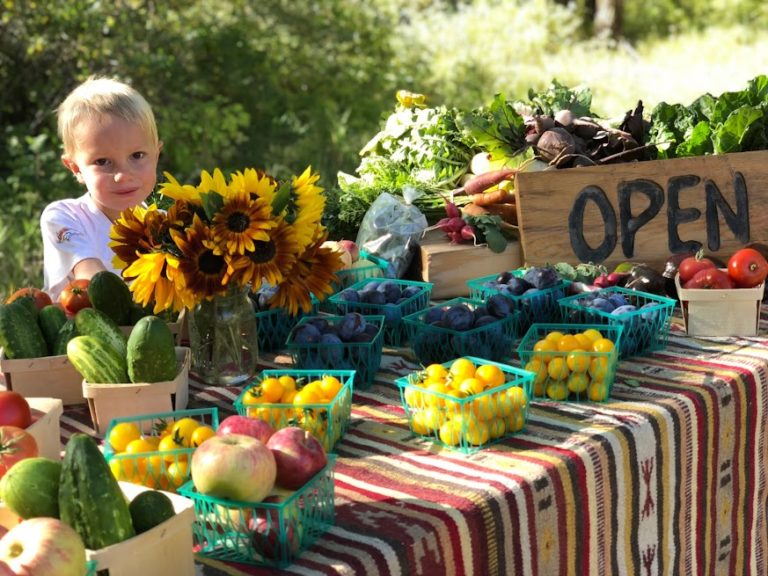
Know where your food comes from
Second, farm-to-table foods are kitchen processed. We used to say “unprocessed,” but the act of cooking in the kitchen is a form of processing, so we changed the semantics. The key point is that raw ingredients are used in food preparation. This is easy to conceive of with something like vegetables, but it is true of meats and grain products as well.
Bread is a good example of a food that is difficult to make farm-to-table. Searching out a farm that grows wheat, purchasing direct from the farm, and milling your own flour are cumbersome steps, especially compared to simply buying a bag of organic flour at the store. But, pretty well all store bought flour is batch processed and probably a consolidation of wheat from numerous farms.
We encourage everyone to start eating farm-to-table with a few simple items like fresh vegetables, and expand into more difficult foods as your interests lead you.
One of the beautiful things about preparing food picked in the height of its season that hasn’t been shipped hundreds or thousands of miles, is you have a much more pure flavor. Thus when you go to prepare it, you can use really simple cooking techniques to amplify the flavor without having to make overly complicated dishes. Instead, you can let the pure flavor of the food shine.
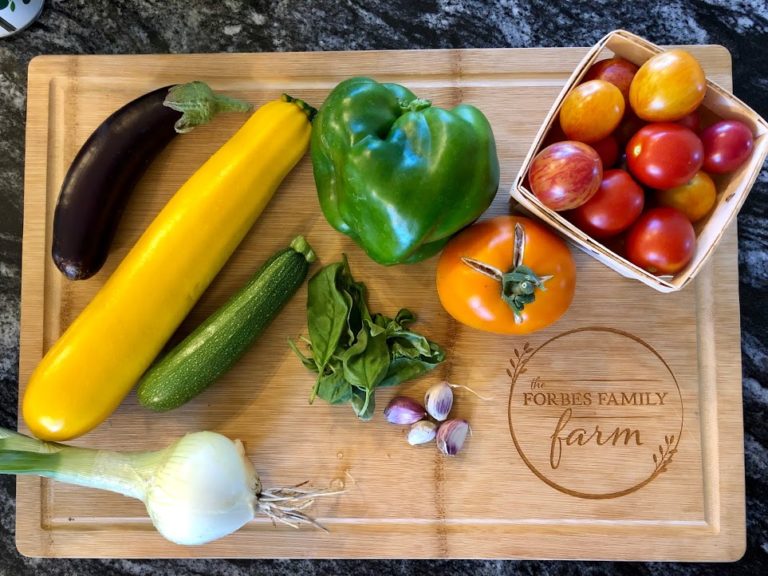
Experience the uniqueness of your local food scene
Finally, farm-to-table eating is inherently local and seasonal. Produce begins losing its nutrients within hours of being harvested, so if you’re able to source locally you are not only going to find products that taste better, but are healthier for you as well. When big commercial operations are selecting varieties to grow, they are typically choosing for shelf stability and ability to withstand transit. But local producers are able to choose varieties based on flavor or unique qualities that make it well adapted to a particular climate. As a consumer you’ll be have access to varieties you just wouldn’t find elsewhere. It will also put you more in touch with what can be grown in your region and the changing of the seasons.
Technology makes it possible to have a relationship with a farm halfway around the world and have food shipped to your door. But, the real joy of farm-to-table eating comes from knowing exactly where your food comes from, and adapting to its availability. The climate, ecosystem, and cultural traditions of your locale will shape the foods you have to eat throughout the year.
The modern world is a place of on-demand everything. We expect to have certain foods available anytime we need them. But this is an unnatural product of technology. Learning to appreciate the rhythm of the seasons inspires creativity in the kitchen and gives a deeper respect for the abundance or scarcity of certain foods as the seasons change. Can that be challenging as well? Of course! But the greatest creativity comes when there are constraints. Over time, you’ll learn more about what is available when and how to preserve food at its peak to enjoy later in the year.
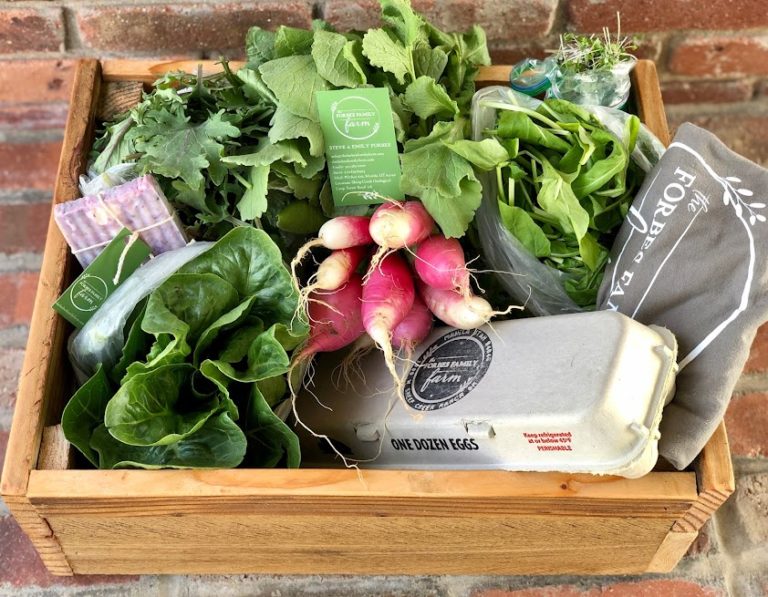
I see the value of farm-to-table eating, but how do I get started?
While eating farm-to-table can seem like a lofty concept, it’s actually quite easy to get started. Find a local farmer and see what’s in the height of its season right now. Bring it home and plan a menu around that item. Invite friends and family over and enjoy the meal!
Let us know how this idea of farm-to-table plays out in your own experience. Are you able to find local farms to connect with to source your food?
